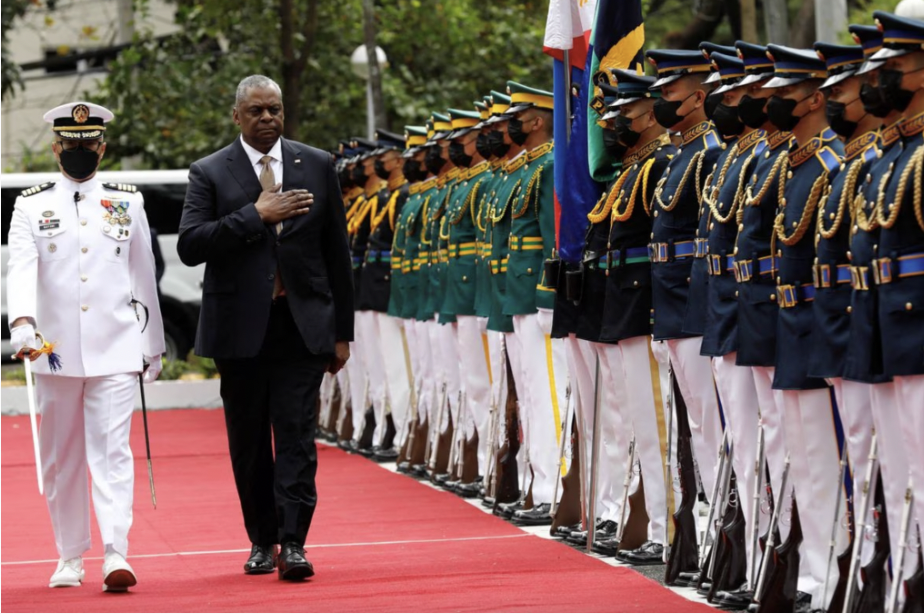The New EDCA Sites and the U.S.-Philippines Alliance
On February 1st, a significant milestone in U.S.-Philippine relations was achieved. The U.S. Department of Defense stated that the Philippines was in agreement with the U.S. plan to establish four more military sites with the aim of expanding the Enhanced Defense Cooperation Agreement Project (EDCA), which facilitates joint military activities between the two countries and further supports a “strong and resilient alliance”. Through the agreement, the U.S. is allowed to assist with the Philippine military modernization, such as training, exercising, and the preposition of equipment, while stabilizing the alliance and reinforcing credible commitment to the Philippines.
Compared to the original EDCA sites, which are mainly Army and Air Force sites, the new four locations will further focus on the partnership of the U.S. Navy and Marine Corps. According to the Department of Defense, the new bases will also, “allow more rapid support for humanitarian and climate-related disasters in the Philippines, and respond to other shared challenges.” Though not being specified, it is believed that new sites would be located at Cagayan, Palawan, Zambales, and Isabela, all of which have undeniable geographical significance in balancing China’s power and strengthening the security of the Indo-Pacific region.
The improving alliance between the U.S. and the Philippines is a reaction to increasing Chinese aggression. Despite the fact that the U.S. is still dealing with the Russian invasion of Ukraine and achieving commitment toward European allies, the nation has gradually shifted foreign policy and security focus to the Indo-Pacific region. This is likely another attempt to deter Chinese aggression against Taiwan and within the South China Sea, a part of the ongoing struggle between the U.S. and China to challenge and rebalance their positions as great powers.
Despite the Philippines’ pro-China foreign policy under the Duterte administration, the nation had experienced continuous Chinese breaches of oceanic international borders. The Filipino military has since recognized that their abilities to deter Chinese involvement in their affairs would be ineffective without the support of the U.S. Thus, the U.S.-Philippine alliance and the renewed cooperation, according to Kenneth Faulve-Montojo, an expert studying Filipino politics, is “a win, win situation” for both sides.
After President Ferdinand Marcos Jr. came into office, foreign policy shifted dramatically. The reconstruction of U.S.-Philippine relations have been heavily pursued by the Marcos administration. The disputes between China and the Philippines have reinforced the desire of the Philippines to deter Chinese action against Taiwan; a goal which has been included in their national security strategy. The Philippines has also been concerned about Chinese conflicts and violation of international orders regarding freedom of navigation and fisheries. The extension of EDCA and gradually deepening U.S.-Philippine relations all indicate that the Philippines will not tolerate future Chinese oppression and will take a different, yet tougher, stance in the U.S.-China competition.
The U.S. has been operating at five sites in the Philippines under the original EDCA. There are four air bases in Pampanga, Cagayan de Oro, Cebu, and Palawan, and one fort in Nueva Ecija. The enhanced EDCA measures will allow the U.S. to access four new military sites in, from north to south, Cagayan, Isabela, Zambales, and Palawan. Two of these locations– Cagayan and Isabela– stand out because of their positioning significance for they sit in the northern part of the Philippines, making them closer to Taiwan. Cagayan, the northeastern tip of the northern archipelago, is separated from Taiwan by only the Bashi Channel. The geopolitical importance of these new navy bases, undeniably, symbolizes the policy shift of both the Philippines and the U.S. to deter and encircle China’s rising power and aggression in the Indo-Pacific region.
The Philippines not only locates itself in a significant spot regarding regional security, but also attains geographical features that are remarkably valuable in defense and offense. The west side of the Philippines faces the South China Sea, where China has exploited natural resources for its own interest. The thriving underwater vegetation makes the west coast a perfect condition for secret submarine movement. The archipelago terrain of the Philippines also gives the U.S. strategic advantages in broader Indo-Pacific security, allowing the U.S. ultimate access to the South China Sea from the islands. The scatteredness of the archipelago also allows the U.S. to develop further counter reactions to the potential Chinese invasion of Taiwan.
Threatened by the rise of China and the potential China-Taiwan war, the U.S. has attempted to deter Chinese aggression in nearly every aspect. With the efforts in building multilateral partnerships with its allies, like the extension of EDCA with the Philippines, the U.S. is able to increase its involvement as a military and diplomatic superpower in the Indo-Pacific region.
Photo Credit: Reuters
